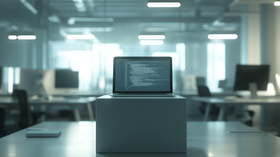AWS Penetration Testing for Enhanced Security: Uncover Hidden Risks
Security is a moving target in the cloud. Don't let vulnerabilities blindside your AWS infrastructure and discover how penetration testing can keep your data safe.
Published April 5, 2025.

In today’s digital world, you likely rely on cloud environments like Amazon Web Services (AWS) for your operations. AWS offers scalability, flexibility, and convenience, enabling you to expand your infrastructure efficiently. With the cloud applications services market expected to grow at an annual rate of 19%, cloud computing’s importance continues to rise.
However, these benefits come with security challenges that you need to address to ensure the security of your systems and data in the cloud. AWS penetration testing can help you tackle these challenges by simulating real-world attack scenarios to uncover hidden vulnerabilities, identifying misconfigurations, access control weaknesses, and security gaps.
» Protect your business with professional penetration testing services
On-Premise vs. AWS Penetration Testing: Understanding the Differences
Penetration testing varies significantly between traditional on-premise environments and AWS cloud environments. In on-premise settings, you have full control over your infrastructure, allowing penetration testers to assess everything from physical security to internal network configurations.
In contrast, AWS operates under a shared responsibility model where Amazon manages the physical infrastructure, and you are responsible for securing your use of AWS services.
» Did you know? The cloud might not be safe anymore
Differences Between On-Premise & AWS Penetration Testing
| | On-Premise Penetration Testing | AWS Penetration Testing |
|---|---|---|
| Control | Full control over infrastructure | Shared responsibility model |
| Scope of Testing | Comprehensive testing across physical and network configurations | Focus on configurations, access controls, and cloud services |
| Guidelines | No external guidelines | Must adhere to AWS guidelines and testing policies |
| Infrastructure | Relatively static infrastructure | Dynamic environment with continuous provisioning and termination |
| Tools | Traditional penetration testing tools | Cloud-specific tools and methodologies |
» Explore why penetration testing is so important
Typical Targets in AWS Penetration Testing
Effective AWS penetration testing requires you to focus on areas prone to misconfiguration and exploitation.
What Are the Targets of AWS Penetration Testing?
Identity and Access Management (IAM)
You will need to review IAM policies, roles, and permissions to identify overly permissive access controls that can lead to privilege escalation. Misconfigurations in IAM can allow attackers to gain access to critical systems and escalate privileges beyond what is necessary for legitimate use.
S3 Buckets
Publicly accessible or misconfigured S3 buckets can expose sensitive information, leading to data breaches. Misconfigurations such as improper access controls or lack of encryption can result in unauthorized access to private data stored in these buckets.
Virtual Private Cloud (VPC) Security Groups
Misconfigured security groups with overly permissive rules can expose internal services to unauthorized access from the internet. It’s important to identify these issues to prevent attackers from exploiting open ports or services that should not be accessible externally.
EC2 Instances
Outdated software, unpatched vulnerabilities, and misconfigured instances pose significant security risks. Testing EC2 instances involves checking for common vulnerabilities that could allow attackers to compromise the server or escalate privileges.
Lambda Functions
Reviewing the permissions and code of AWS lambda functions is crucial, as improperly configured functions can be exploited by attackers to gain unauthorized access. Overly permissive roles or exposed environment variables can provide attackers with sensitive information.
Other Common Targets
Notable mentions are CloudTrail and CloudWatch logs, which are vital for monitoring and detecting suspicious activity. Properly configuring and monitoring these logs helps you identify and respond to potential security incidents in real-time.
» Make sure you understand the different types of penetration tests
Tools and Techniques for Effective AWS Penetration Testing
AWS penetration testing requires tools specifically designed for cloud environments.
Depending on whether you have AWS account access, different tools are used to assess vulnerabilities and misconfigurations in the cloud environment.
Without Access Keys
- CloudFail: Identifies misconfigured Cloudflare domains and uncovers hidden origin server IPs, which can expose servers to attacks if not properly secured.
- S3Scanner: Locates publicly accessible S3 buckets and checks for misconfigurations that could lead to unauthorized access and data exposure.
- Bucket Finder: Brute-forces potential S3 bucket names to find misconfigured or exposed S3 buckets, a common target for attackers looking to steal data.
- CloudBrute: Identifies public assets in cloud environments by brute-forcing names of storage buckets, virtual machines (VMs), and databases, helping you uncover exposed resources.
With Access Keys
- Prowler: Performs AWS security best practices assessments and compliance checks, identifying weaknesses and ensuring that your configurations meet security standards.
- ScoutSuite: Provides multi-cloud security auditing, enabling you to find security issues in AWS and other cloud configurations by analyzing policies and permissions.
- Pacu: An AWS exploitation framework designed to simulate attack scenarios, allowing testers to exploit misconfigurations and vulnerabilities within an AWS environment.
- CloudMapper: Visualizes AWS environments and assesses security configurations, helping you identify misconfigured resources and potential attack vectors.
Cloud-specific tools are essential for focusing on configuration issues and resource management that traditional testing tools may miss. These tools enable you to handle AWS’s scalable, dynamic environment and can uncover hidden risks in your cloud infrastructure.
» Discover what's involved in the risk assessment process
Identifying Common AWS Vulnerabilities
5 AWS Vulnerabilities Found During Penetration Testing:
1. Misconfigured S3 Buckets
Publicly accessible S3 buckets frequently expose sensitive data to unauthorized individuals if access controls are not properly configured. Such exposures can lead to data leaks or breaches, particularly if sensitive information like customer records or proprietary documents is stored.
2. Overly Permissive IAM Policies
IAM policies that are too broad or permissive pose significant security risks. Excessive permissions can be exploited by attackers to gain control of sensitive resources. Penetration testing often reveals IAM misconfigurations that enable privilege escalation or unauthorized access.
3. Insecure EC2 Configurations
EC2 instances running outdated software, unpatched operating systems, or with open ports pose substantial risks. Attackers can exploit these vulnerabilities to compromise the instance and potentially access other resources within your AWS environment. Regular updates and secure network configurations are crucial for mitigating these risks.
4. Exposed Management Interfaces
Management interfaces for EC2 or RDS accessible from the public internet without adequate protection can be prime targets for attacks. Exposed interfaces allow attackers to attempt brute-force attacks or exploit vulnerabilities to gain administrative access.
5. Unrestricted Security Groups
Security groups with overly permissive rules, such as allowing inbound traffic from any IP address, are a significant risk. These configurations can expose internal resources to unauthorized access from the internet, making it easier for attackers to target your critical systems. Properly restricting access based on least privilege principles is crucial.
» Find out more about security assessments with vulnerability scanning vs. penetration testing
Hidden AWS Risks
Besides the main risks, there are hidden ones you should know about:
- Server-side request forgery (SSRF) vulnerabilities: Attackers can exploit SSRF to access AWS metadata APIs, retrieving access keys and escalating privileges within your AWS environment. If not addressed, this can often lead to serious account compromise.
- Minor misconfigurations: Minor misconfigurations, such as weak IAM policies or exposed S3 buckets, might seem insignificant individually. However, when attackers chain these misconfigurations together, they can create pathways to compromise more sensitive resources within your AWS infrastructure.
Automated vs. Manual AWS Penetration Testing
Automated Penetration Testing
Automated tools are ideal for quickly scanning large areas of the infrastructure and identifying common misconfigurations or vulnerabilities. These tools provide continuous monitoring and adapt to AWS's dynamic environment, where resources frequently change. However, they may not detect more intricate issues, such as vulnerabilities from chaining smaller misconfigurations.
Manual Penetration Testing
Manual testing offers you a deeper, more tailored analysis of an AWS environment. This method can uncover unique vulnerabilities, such as chained misconfigurations or privilege escalation opportunities that automated tools might miss.
Although more time-consuming and resource-intensive, manual testing provides a thorough evaluation of your system's security posture.
» Did you know? You can leverage penetration testing for compliance
Tailoring Penetration Testing for Different AWS Environments
Penetration testing should be tailored based on the specific environment:
1. Development Environment
You can perform aggressive, exploratory testing with greater flexibility through a secure development lifecycle. This environment, used for building new features and configurations, is ideal for uncovering vulnerabilities early in the process.
Penetration tests in development can include code analysis, configuration checks, and stress testing, allowing security flaws to be addressed before reaching production.
» Learn how ISO 27001 certification manages information security risks
2. Staging Environment
Staging environments should closely mirror the production environment. Testing here simulates user interactions and workflows while thoroughly evaluating the security of APIs, databases, and user interfaces. Controlled testing ensures vulnerabilities are identified and remediated before deployment to production.
3. Production Environment
Testing in production environments requires caution to avoid disrupting live services. Tests should be highly targeted, focusing on high-risk areas such as public-facing assets, APIs, and access controls. The emphasis is on identifying and remediating security vulnerabilities without affecting operational stability, with a strong focus on compliance and authorization.
Compliance and Security in Your AWS Environment
While AWS offers scalability and flexibility, it also introduces unique security challenges compared to traditional on-premise setups. Effective penetration testing is essential for identifying hidden vulnerabilities and ensuring compliance in AWS environments. Utilizing both automated and manual methods helps you manage risks, enhance security, and protect your data. Safeguard your business and maintain compliance with tailored penetration testing services for your AWS infrastructure.
» Ready to bolster your security? Contact us to start leveraging the benefits of penetration testing







